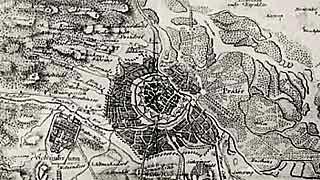History of Vienna’s sewer system
- Roman and medieval sewer systems
- Vienna’s sewer system in the modern period
- Vienna’s sewer system in the 20th century
- Vienna’s wastewater treatment plants - from small beginnings to state of the art
- Vienna's wastewater management and water protection plan
Chronology of Vienna's sewer system
- Approx. 100 AD: The military camp of the 13th Legion in Vindobona has a modern sewer system.
- Approx. 400 AD: With the migration period, the sanitary standards of the Romans are lost for centuries.
- 1388: Construction of subterranean stone conduits leading to openly flowing channels.
- 1683: Construction boom; after the second siege of Vienna by the Turkish army, new buildings are generally connected to the street sewers.
- 1739: Vienna is the only city in Europe to be fully sewered within its city walls.
- 1830: A cholera outbreak costs more than 2,000 lives. The "cholera sewers" alongside the River Wien are built.
- 1837: Further large collectors are built (for the Ottakringerbach, Alsbach and Währingerbach brooks). In comparison, the construction of a cohesive sewer system began in Hamburg in 1848, in Paris in 1855, in London in 1858, in Frankfurt in 1867 and in Berlin in 1873.
- 1851: Expansion of the sewer system and renovation of old sewers.
- 1861: Sewer construction boom after the city walls were torn down, including changes to a part of the covering of Ottakringerbach and the main collector to the left of the River Wien.
- 1881: Expansion of the sewer system, modifications, smaller construction activity.
- 1891: Construction starts on the collector sewers in the suburbs; new construction and modifications to the Krottenbach, Währingerbach, Ameisbach and Lainzerbach brooks; construction of the right and left main collectors alongside the Danube Canal begins.
- Until 1914: Constant expansion of the urban sewer system (status in late 1914: 923 km of public sewers, 1,530 km of house sewers).
- 1923: On 1 July, private sewer cleaning companies are bought by the City of Vienna under Mayor Seitz, and their staff is employed by the city. This is considered the founding year of Wien Kanal.
- Until 1930: World War I and the Great Depression slow down the expansion of the sewers.
- 1948: A British film team comes to Vienna to shoot the film "The Third Man". Score composer Anton Karas and Vienna's sewer system become world famous.
- Until 1950: Repair of damages caused by the bombing (1,765 individual damages on main and secondary sewer lines)
- 1951: Vienna's first wastewater treatment plant is opened in Inzersdorf (closed down in 1970).
- 1970: The Inzersdorf-Blumental plant, Vienna's first biological wastewater treatment plant, starts its operation (closed down in 2005).
- 1980: The Simmering wastewater treatment plant opens and treats all of Vienna's wastewater together with the Blumental plant.
- 2002: The sewer information system KANIS goes online. For the first time ever, complete data about the entire sewer system of a capital city are available online.
- 2005: The expanded Main Wastewater Treatment Plant Wien-Simmering, Europe's most modern water purification plant, is opened.
- Today: 99 percent of all households are connected to Vienna’s sewer system – one of the highest rates in Europe.
City of Vienna | Vienna Waste Water Management
Contact form

